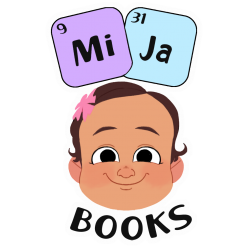
I am ecstatic to announce the launch of my quarantine project, MiJa Books! The mission of MiJa Books is to showcase multicultural and diverse children’s books that feature children of color on the front cover and as the main characters.
My idea for this site stemmed from my personal experience shopping for children’s picture books. When I was pregnant with my daughter, my first child, I wanted to start building a home library for her, just as I had as a kid (you can read more about this in our “About Us” page.) As a proud Latina and wife to my amazing Black husband, I wanted our Afro-Latina daughter to have a diverse collection of books that featured relatable and aspirational characters of color. But I soon found that this was easier said than done.
I was dismayed that I had to search far and wide to find books that prominently featured brown children on the cover. The overwhelming majority of children’s book covers I came across seemed to have mostly White faces and/or animals featured on the covers, and this rang true both when browsing bookshelves in-store and browsing through pages online. When I did find the diverse books in-store, they were often on a separate bookshelf or section of the store, segregated from the main book aisle that had solely or majority covers with White faces and/or animals. This disheartening and enraging experience is what empowered me to create a platform that would make this search much easier for anyone else looking for diverse children’s books.
As a strong proponent of scientific inquiry, I did some research to see if my observations on the lack of diversity in children’s books carried any merit. I found this eye-opening infographic that was all I needed to see to validate my views.
The image was released by Sarah Park Dahlen, an associate professor of MLIS at St. Catherine University in St. Paul, MN, and illustrator David Huyck. They relied on the multicultural publishing statistics compiled by the librarians at the University of Wisconsin-Madison School of Education Cooperative Children’s Book Center (CCBC). Infographic Citation:Huyck, David, and Sarah Park Dahlen. (2019 June 19). Diversity in Children’s Books 2018. sarahpark.com blog. Created in consultation with Edith Campbell, Molly Beth Griffin, K. T. Horning, Debbie Reese, Ebony Elizabeth Thomas, and Madeline Tyner, with statistics compiled by the Cooperative Children’s Book Center, School of Education, University of Wisconsin-Madison: https://ccbc.education.wisc.edu/literature-resources/ccbc-diversity-statistics/ Retrieved from https://readingspark.wordpress.com/2019/06/19/picture-this-diversity-in-childrens-books-2018-infographic/
Infographic Citation: Huyck, David, Sarah Park Dahlen, Molly Beth Griffin. (2016 September 14). Diversity in Children’s Books 2015 infographic. sarahpark.com blog. Retrieved from https://readingspark.wordpress.com/2016/09/14/picture-this-reflecting-diversity-in-childrens-book-publishing/ Statistics compiled by the Cooperative Children’s Book Center, School of Education, University of Wisconsin-Madison: https://ccbc.education.wisc.edu/literature-resources/ccbc-diversity-statistics/ Released for non-commercial use under a Creative Commons BY-NC-SA 4.0 license.
With MiJa Books, I will be showcasing both children’s books that specify a character of color’s specific race or ethnicity and children’s books that feature apparent characters of color without specific indication of their race or ethnicity. I think it’s as equally important to normalize seeing brown-skinned characters with no overt focus on their ethnicity as it is to celebrate books with characters that identify with a specific race or ethnicity.
I hope that not only families of color visit and find my site useful, but that White families also feel the need to diversify their children’s libraries. Now, more than ever, we must normalize seeing diverse races and ethnicities amongst us and the beauty that comes from having healthy conversations and relationships with people from different cultural backgrounds.
The late, great Maya Angelou said it best:
“It is time for parents to teach young people early on that in diversity there is beauty and there is strength. We all should know that diversity makes for a rich tapestry, and we must understand that all the threads of that tapestry are equal in value no matter their color.”
Happy reading, everyone!



